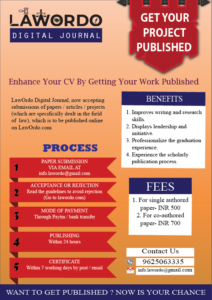EXTERNAL AIDS TO INTERPRETATION
 AUTHORED BY: SANAH SETHI
AUTHORED BY: SANAH SETHI
AMITY LAW SCHOOL, NOIDA
EXTERNAL AIDS TO INTERPRETATION
Dictionaries-
Dictionary use/reference is of great importance and immense value in interpretation of a statute. Where a word or an expression used in a statute cannot be understood in common parlance, the courts, while interpreting the statute may resort to refer dictionaries for its meaning in common parlance. Therefore, the dictionaries are referred/consulted by the courts, whenever need arises to find out the ordinary sense of the words. However, the courts must be very careful while referring the dictionaries because the dictionary meaning of the word may not be true at all times in a particular sense. If a word or an expression in an Act has been defined, there is no need to refer the dictionary to find out its general meaning. One of the main objects of every dictionary of the English Language is to give an adequate and comprehensive definition of every word contained in it. Dictionaries are referred to, not only for meaning of the word, but also to find out the general use of it.
 Click me to submit an article
Click me to submit an article
Textbooks-
Sometimes, courts, while interpreting a statute refer textbooks authored by distinguished jurists and eminent scholars, so as to arrive at a true meaning of an enactment. However, it is not necessary that the meaning of the words given in the textbooks should correspond to the views/opinions of the Courts. In certain cases, Vedas are quoted with approval by the courts. For example- Manu Smriti, Agna Valkya Smriti, Jimutavahana, Vignaneswara, Kanitilya etc.
Kesavananda Bharati v. State of Kerala (AIR 1973 SC 1461)
In this case, the Supreme Court referred a large number of textbooks. The majority opinion was that, in view of many opinions and counter opinions expressed by the authors and jurists in the textbooks, it was not desirable to follow the opinions quoted in the textbooks.
Historical facts and surrounding circumstances-
The Courts, while interpreting a provision in a statute may refer some times, the historical facts and circumstances of the provision to find out its accurate, real and complete meaning of the provision in law. The external aid in the form of historical facts and circumstances surrounding the legislation is necessary and quite useful in understanding the subject matter of the statute and thereby to arrive at the legislative intent. (Keats v. Lewis Merthbyr Consolidated Collieries Ltd. (1911).
Legislative or Parliamentary History-
Earlier courts, while interpreting a provision in a statute used to refer legislative history to ascertain its clear and complete meaning. The Traditional English Courts used to refer the report of a Committee presented to the Parliament/Legislature as an external aid. But the modern trend seems to be that legislative history is not permissible as an aid to interpretation.
In A.K. Gopalan v. State of Madras (AIR 1950 SC 27), the Supreme Court observed that the debates in Parliament on a bill are not admissible for the construction of an act. However, it became incompatible to the Supreme Court to refer legislative history as an aid, while interpreting a provision in the statute.
Foreign decision/Judgments and Foreign Statutes-
Most of the Indian Legislations are modeled on the previous English Statutes. Similarly, the principles laid down in many decisions of the common law courts in England have been approved and followed in Indian Courts. Therefore, the Indian legal system is the replica of the English jurisprudence. Before independence i.e before the establishment of the apex court in India, appeals from the Indian High Courts were heard by the Privy Council were followed and applied in Indian Courts, even after the independence till date. It is to be noted that a number of statutes in India, substantial and procedural namely the Indian Penal Code, 1860, the Indian Evidence Act, 1872 etc. were drafted by the British Parliament, which are applied in Indian Courts.
 Click me to submit an article
Click me to submit an article
International Law: Treaties and Conventions
One of the most important branches of public law is International law. It is of two kinds- Public International Law and Private International Law/Conflict of Law. International Law is a body of rules and principles, which regulate the conduct and relations of the members of the International Community (UNO or U.N.). The term convention literally means “the act of convening a conference as assembly, representatives or delegates assembled for a common cause”. Eg- United Nations Convention on Law of Sea, 1982. Whereas the term treaty means an agreement entered into between two or more states (countries) on a particular subject. Eg- an agreement between India and Pakistan is called Indo-Pak Treaty.
Contemporanea Expositio or contemporaneous Exposition or Construction
The word ‘Contemporanea’ means “of the same time or the same period and the word exposition or exposition means explanation. Hence, the expression ‘contemporanea expositio’ means interpreting a statute or any other document by referring to the exposition it has received from contemporary authority.”
The rule of Contemporanea Expositio was coined for the first time by Lord. Coke.
In R.S. Nayak v. A.R. Antuley, (AIR 1984 SC 684), the Supreme Court construed Section 21 of Indian Penal Code, 1860 by referring to the principle of ‘Contemporanea Expositio’ and it was held that a member of legislative assembly is not a public servant as defined in the section.
Government Circulars, Publications (Reports of Commissions and Committees)
Government Circulars, Publications and Reports have been considered as external aids in construction of statutes. Hence, the courts, at the time of interpretation of statutes. Hence, the Courts at the time of interpretation refer them, unless they do not go against the spirit of statute under which they are issued.
In Express Newspapers Pvt. Ltd. v. Union of India (AIR 1958 SC 578)- The Supreme Court referred the Press Commission’s Report.
